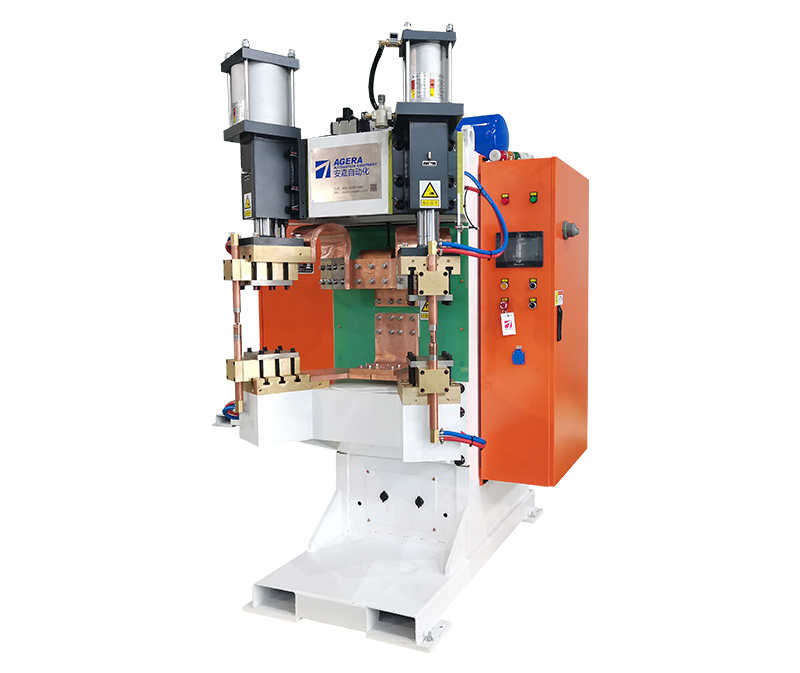Technical Parameters of Nut Spot Welding Machine
The nut spot welding machine is a versatile and efficient tool used in various industries for joining metal components. To ensure its optimal performance and productivity, it is crucial to understand and consider its technical parameters. In this article, we will explore the key technical parameters of the nut spot welding machine.
- Welding Current: The welding current is a critical parameter that determines the heat input during the welding process. It is usually measured in amperes (A) and directly influences the weld nugget formation and joint strength. Properly setting the welding current ensures the right amount of heat is generated to achieve reliable welds.
- Welding Time: Welding time refers to the duration for which the welding current flows through the electrodes and the workpieces. It is measured in milliseconds (ms) and significantly affects the size and quality of the weld nugget. Finding the right balance between welding time and current is essential to avoid under or over-welding.
- Electrode Force: The electrode force, measured in kilonewtons (kN), represents the pressure applied by the electrodes on the workpieces during welding. Sufficient electrode force is necessary to ensure proper electrical contact and consolidation of the joint. However, excessive force can lead to deformation or damage to the workpieces.
- Electrode Diameter: The electrode diameter influences the heat concentration and distribution at the welding point. Selecting the appropriate electrode diameter is crucial to achieving consistent and reliable welds.
- Electrode Material: The choice of electrode material affects factors such as electrical conductivity, wear resistance, and thermal conductivity. Commonly used electrode materials include copper alloys and refractory metals like tungsten.
- Welding Current Control: The nut spot welding machine may have various welding current control options, such as constant current or constant power mode. These options allow for better control over the welding process and adaptability to different workpiece materials and thicknesses.
- Welding Voltage: The welding voltage, measured in volts (V), plays a role in determining the arc length and heat generation. It is generally controlled automatically by the welding machine to maintain stable welding conditions.
- Cooling System: The cooling system is essential for preventing the welding machine from overheating during prolonged use. It ensures consistent performance and prolongs the machine’s lifespan.
The technical parameters of the nut spot welding machine are crucial factors that influence the quality and efficiency of the welding process. Understanding and optimizing these parameters are essential for achieving reliable and high-quality welds in various industrial applications. Proper calibration and adjustment of these parameters ensure the nut spot welding machine’s performance meets the specific requirements of each welding project, leading to successful and durable welds.
